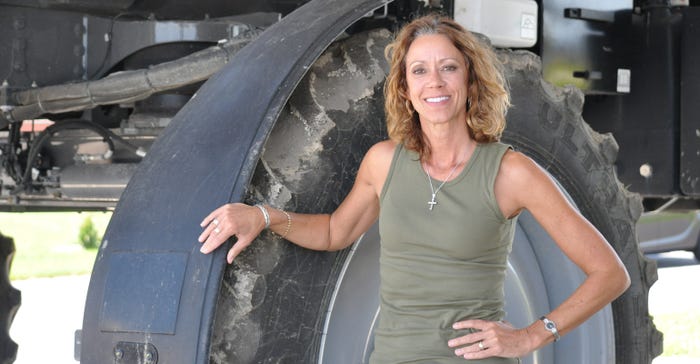
On Oct. 14, the EPA reached an agreement with Monsanto, BASF and DuPont that both reclassified dicamba as a restricted-use pesticide and addressed ways to minimize off-target in-season dicamba damage in 2018.
What’s the key to potential success? Jean Payne, Illinois Chemical and Fertilizer Association president, sums it up with three words: training, preparation and compliance.
In addition to the restricted-use pesticide designation, label requirements for XtendiMax, Engenia and Fexapan include dicamba-specific training, Payne explains. Application guidelines are similar across all three products, she adds, eliminating confusion between the different products and requirements.
In Illinois, that means there are 18,000 certified applicators and operators who will need dicamba-specific training if they want to apply the products in 2018 — and the pressure is on for on-target applications.
Payne says 2018 is a “make it or break it” year, and this may be the industry’s last chance to get it right. “I think you’ll see tremendous resources in the industry put toward this, because we want to keep this technology in the marketplace beyond 2018. Everyone should approach the training with a positive attitude, because U.S. EPA has provided us with an opportunity to improve the use of this product in 2018.”
 THE PRESSURE IS ON: Jean Payne, Illinois Fertilizer and Chemical Association, says 2018 is a “make it or break it” year for in-season dicamba. The XtendiMax, Fexapan and Engenia labels expire in December 2018, and this may be the industry’s last chance to get it right.
THE PRESSURE IS ON: Jean Payne, Illinois Fertilizer and Chemical Association, says 2018 is a “make it or break it” year for in-season dicamba. The XtendiMax, Fexapan and Engenia labels expire in December 2018, and this may be the industry’s last chance to get it right.

Chemical application training expert Bob Wolf says the industry needs better dicamba-specific training. “That was a major part that got missed last year in some locations,” he explains. “There are a lot of people, private farmer applicators, who probably didn’t attend a training session, and I’m not sure how much detail they got in 2017. This provides an opportunity to get a more focused training program in front of growers.”
What tops the training priority list? Tank cleanout. The requirements on previous labels fell short, Wolf notes, and sprayer contamination was a significant challenge in 2017.
Previous tank cleanout guidelines were specific to the sprayer, not the tender or mixer. “It wasn’t enough,” Wolf says. “Anything that touched dicamba, from beginning to the end, was a possible contaminant.”
The new tank cleanout guidelines address chemicals left in tanks and sprayers before dicamba applications, Payne says, such as AMS, nitrogen and adjuvants that may impact the acidity and pH of the water if not properly flushed out.
Smaller application window
Training, experts say, is half the battle. Next up: Mother Nature and a narrow application window.
New regulations say in-season dicamba products may be applied when the wind is from 3 to 10 mph. Previous labels allowed application in wind speeds up to 15 mph if sensitive crops were not downwind.
“In central Illinois, we don’t have many days in the spring with wind or wind gusts below10 mph,” Payne says.
Don’t forget temperature inversions. When you add those to the requirement list, the application window shrinks even further. IFCA will include inversion experts from North Dakota State University in training sessions this winter. “We’re going to do our best to train our members [commercial applicators] to be meteorologists,” she says.
Another complicating factor? Illinois applicators expect in-season dicamba use to double — at least — in 2018. In 2017, Payne estimates one-third of the 3 million Xtend acres were treated with in-season dicamba. In 2018, she projects applicators will be asked by farmers to treat twice that.
“It will be a real challenge, but we can do this,” she says. IFCA will work with the product manufacturers, Illinois Department of Agriculture, the University of Illinois and fellow ag groups to help coordinate Illinois’ dicamba-specific training programs.
About the Author(s)
You May Also Like




